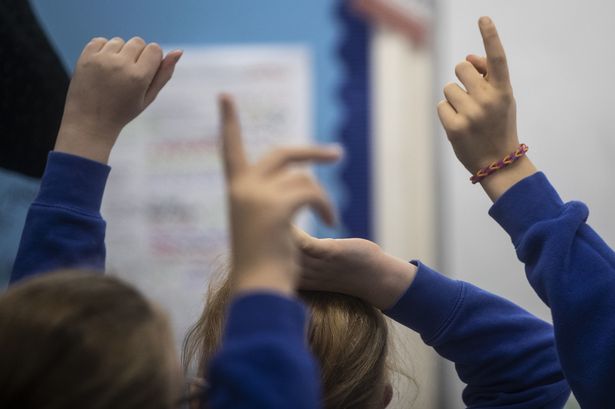A report has shown a decline in studying languages at A level in Wales There are less students learning languages at A Level(Image: PA)
There are less students learning languages at A Level(Image: PA)
A sharp drop in the study of languages at A level in Wales has sparked concerns over one subject disappearing from the curriculum altogether. A British Council Wales report, published today, shows a significant drop in the number of post-16 pupils picking languages such as French and German.
Two-fifths of secondary schools in Wales report no post-16 language provision, and this is particularly the case in less affluent areas.
Schools also cite low demand, exam grading, and resourcing challenges as barriers. The British Council Wales warns that recent progress in language learning could be lost without sustained action, and the risk that German might disappear from the A level curriculum in Wales within three years.
The Language Trends Wales 2025 report paints a mixed picture with increased uptake at primary level and tentative signs of recovery at GCSE, but a continuing decline in post-16 study that threatens the long-term sustainability of language learning in Wales.
Conducted by Queen’s University Belfast, the research surveyed primary and secondary schools as well as post-16 colleges, charting progress and challenges in language education under the New Curriculum for Wales.
At primary level, more than 80% of schools now teach an international language.
This is double the figure reported in 2022. For our free daily briefing on the biggest issues facing the nation, sign up to the Wales Matters newsletter here.
French remains the most commonly taught, followed by Spanish and Arabic, while some schools are introducing British Sign Language, Polish, and Portuguese.
However, the report found that although international languages are a statutory component of the New Curriculum for Wales in primary schools, they face several significant challenges.
These include limited staff proficiency; around three-quarters of primary schools reported that staff proficiency in international languages is a key challenge, as well as restricted curriculum time and competition from Welsh and English.
Meanwhile, after more than a decade of significant decline, GCSE entries in Wales are beginning to show some tentative signs of recovery.
Entries for French increased from 2,126 in 2024 to 2,269 (up 6.7%) in 2025, while Spanish, which took a dip between 2023 and 2024, rose from 1,359 to 1,591 (up 17%).
Although German continues its downward trend, dropping to 432 entries (down 7%), overall participation in international languages at GCSE has grown for the second consecutive year.
Despite signs of recovery, access to GCSE language learning remains uneven.
Two-thirds of secondary schools cancel language classes when learner numbers are low, a problem most acute in lower-income areas.
Schools in more advantaged communities are far more likely to sustain courses and offer a broader range of languages. At A level, the picture is more concerning.
Entries for French have fallen 30% from 242 in 2024 to 169 in 2025, while German has dropped nearly one-third (32%) from 62 to 42.
Spanish is the only language showing stability at A level, while entries for other international languages remain very low.
If current trends continue, some languages, particularly German, will disappear from the curriculum.
Two-fifths of secondary schools surveyed offer no post-16 language provision, particularly in less affluent areas, while in half of the schools that do, classes are cancelled if learner numbers are too low.
A small number of schools in lower socio-economic areas are defying national trends, maintaining or even expanding their language offer through creative timetabling, collaboration with partner schools and colleges, and initiatives such as the Welsh Government-funded MFL Student Mentoring Scheme, which supports schools to promote multilingualism and increase GCSE uptake.
Linguistic diversity is also increasing, with a growing presence of home, heritage, and community languages.
84% of responding secondary schools have learners for whom Welsh or English is an additional language.
Secondary schools across Wales now offer Arabic, French, German, Italian, Japanese, Mandarin, Spanish, and Urdu, and pupils collectively speak around 45 different languages.
Speaking about the findings, Dr Ian Collen, who co-led the research, said: “These language trends findings come amid growing concern about the future of international languages across Wales’ education ecosystem.
“Our data show GCSE classes do not run if there are not enough learners in two thirds of schools and most of these schools are in less affluent areas.
“Young people are effectively being denied the opportunity to widen their horizons.
“The report warns that without coordinated investment across schools, further education colleges and universities, the long-term sustainability of international language learning in Wales remains questionable.”
Ruth Cocks, director of British Council Wales, added: “We’re encouraged by green shoots of progress in primary schools and a modest recovery in GCSE entries, particularly as they return to pre-Covid levels. But these gains are fragile, and the overall decline in language learning at secondary level remains a serious concern.
“The sharp fall in post-16 study, especially in A-level German is a warning we cannot ignore. Without a clear pathway from school to university, we risk losing the enthusiasm and curiosity that younger learners are beginning to rediscover.
“Dedicated teachers and consortia leads continue to keep the spark alive, showing how essential multilingualism is for young people to thrive in an increasingly connected world. Wales has already shown through its investment in the Welsh language what is possible with long-term vision and commitment.
“With the same ambition for international languages, we can build a truly multilingual generation, one that realises the promise of the new Curriculum for Wales and strengthens Wales’ place in the world.”
